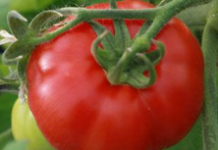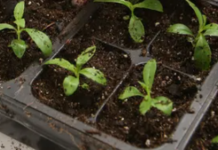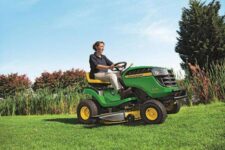K-State horticulture expert shares how to prevent and control volunteer trees
MANHATTAN, Kan. – During December, many homeowners are focused on Christmas trees, but Kansas State University horticulture expert Ward Upham said there are other trees to be thinking about.
“Though trees are a vital part of our landscapes, there are situations where volunteer trees need to be controlled,” Upham said.
Volunteer trees are saplings that grow from seeds by themselves. Often the issue is the wrong plant in the wrong place, such as home lawns.
“If the tree is still small and a desirable species, you may want to consider transplanting in the spring,” Upham said.
Active control measures can be taken if the tree is not desirable. Most trees resprout after cutting, but those that don’t, can be effectively controlled by cutting. Upham listed a few examples of common species that do resprout after being cut:
• Siberian Elm.
• Hackberry.
• Osage Orange.
• Oak.
• Ash.
• Aspen.
• Cottonwood.
• Maple.
• Sycamore.
• Willow.
Tree species that do resprout after cutting call for different control methods. “These trees will either need to be dug out or the cut stump treated with herbicide after cutting,” Upham said.
Upham said the recommendations he gives to control volunteer trees are only for those that come from seeds rather than suckers that originate from the roots of an existing tree.
“Using herbicides on suckers will damage and very possibly kill the original tree,” Upham said “Trees that commonly produce suckers include tree of heaven, honey locust, black locust, western soapberry, cottonwood, aspen, poplar, willow and boxelder.”
According to Upham, the most commonly available herbicides are triclopyr and glyphosate. Roundup is a common name for an herbicide that contains glyphosate, while triclopyr is found in many brush killers.
“Read the label before purchasing to make sure that a stump treatment is listed,” Upham said. “Most often the undiluted or lightly diluted product is applied to the stump immediately after cutting.”
Regardless of the herbicide used, it is important to treat the stump immediately or within five minutes of cutting.
“Trees do not need to be actively growing to be controlled,” Upham said. “Actually this time of year is a very good time to treat as long as applications are made when the temperature is about freezing.”
Upham and his colleagues in K-State’s Department of Horticulture and Natural Resources produce a weekly Horticulture Newsletter with tips for maintaining home landscapes. The newsletter is available to view online or can be delivered by email each week.
Interested persons can also send their garden- and yard-related questions to Upham at [email protected], or contact your local K-State Research and Extension office.
-30-
FOR PRINT PUBLICATIONS: Links used in this story
K-State Horticulture Newsletter, https://hnr.k-state.edu/extension/info-center/newsletters/index.html
K-State Research and Extension local offices, www.ksre.k-state.edu/about/stateandareamaps.html
K State Research and Extension is a short name for the Kansas State University Agricultural Experiment Station and Cooperative Extension Service, a program designed to generate and distribute useful knowledge for the well being of Kansans. Supported by county, state, federal and private funds, the program has county extension offices, experiment fields, area extension offices and regional research centers statewide. Its headquarters is on the K State campus in Manhattan. For more information, visit www.ksre.ksu.edu. K-State Research and Extension is an equal opportunity provider and employer.
Story by:
Emily Halstead
[email protected]
For more information:
Ward Upham
785-532-6173
[email protected]




